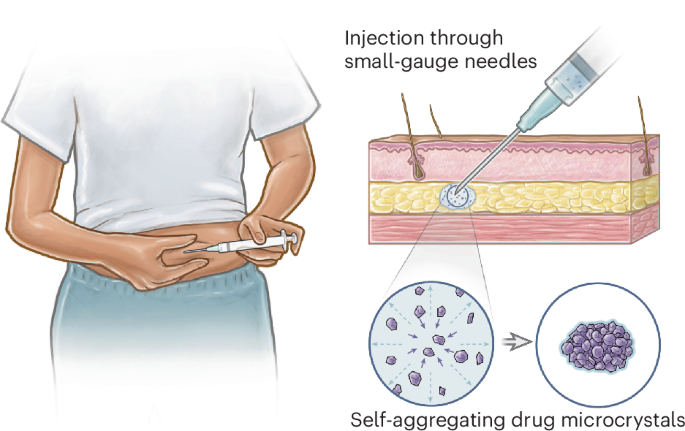2025-03-24 マサチューセッツ工科大学(MIT)
<関連情報>
- https://news.mit.edu/2025/engineers-develop-better-way-to-deliver-long-lasting-drugs-0324
- https://www.nature.com/articles/s44286-025-00194-x
自己凝集性の長時間作用型注射用微結晶 Self-aggregating long-acting injectable microcrystals
Vivian R. Feig,Sanghyun Park,Pier Giuseppe Rivano,Jinhee Kim,Benjamin Muller,Ashka Patel,Caroline Dial,Sofia Gonzalez,Hannah Carlisle,Flavia Codreanu,Aaron Lopes,Ayten E. Erdogan,Niora Fabian,Ashley Guevara,Andrew Pettinari,Jason Li,Jia Liang,Gary W. Liu,Mark W. Tibbitt & Giovanni Traverso
Nature Chemical Engineering Published:24 March 2025
DOI:https://doi.org/10.1038/s44286-025-00194-x

Abstract
Injectable drug depots have transformed our capacity to enhance medication adherence through dose simplification. Central to patient adoption of injectables is the acceptability of needle injections, with needle gauge as a key factor informing patient discomfort. Maximizing drug loading in injectables supports longer drug release while reducing injection volume and discomfort. Here, to address these requirements, we developed self-aggregating long-acting injectable microcrystals (SLIM), an injectable formulation containing drug microcrystals that self-aggregate in the subcutaneous space to form a monolithic implant with a low ratio of polymer excipient to drug (0.0625:1 w/w). By minimizing polymer content, SLIM supports injection through low-profile needles (<25 G) with high drug loading (293 mg ml-1). We demonstrate in vitro and in vivo that self-aggregation is driven by solvent exchange at the injection site and that slower-exchanging solvents result in increased microcrystal compaction and reduced implant porosity. We further show that self-aggregation enhances long-term drug release in rodents. We anticipate that SLIM could enable low-cost interventions for contraceptives.


